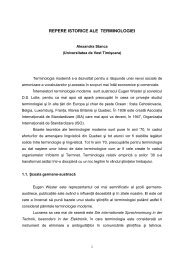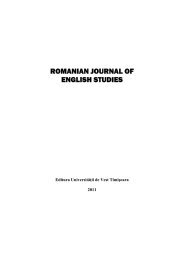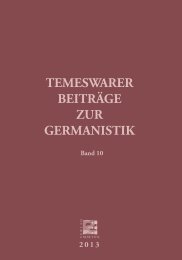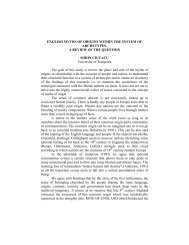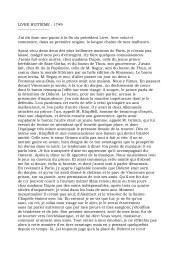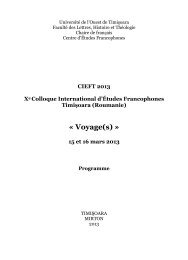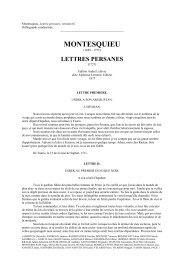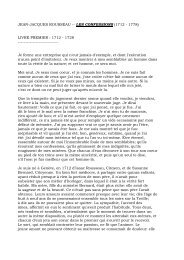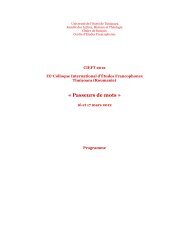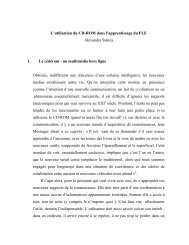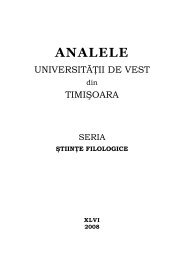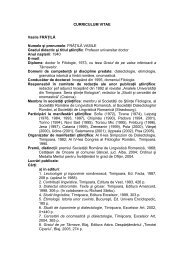TRANSLATION AND MEANING: A CULTURAL- COGNITIVE ...
TRANSLATION AND MEANING: A CULTURAL- COGNITIVE ...
TRANSLATION AND MEANING: A CULTURAL- COGNITIVE ...
Create successful ePaper yourself
Turn your PDF publications into a flip-book with our unique Google optimized e-Paper software.
THE UNRELIABLE TRANSLATOR<br />
VERONICA POPESCU<br />
University of Iaşi<br />
One aspect of translation to which theorists tend to refer to rather<br />
than explore is the very personal and essential contribution that the<br />
translator brings, the use of imagination. Nowadays, when literary<br />
translation is supposedly a more responsible act than in the past, the<br />
translator needs knowledge of the literary and critical history of the<br />
particular text and/or author, awareness of the reason(s) why the particular<br />
text was selected for translation, a good knowledge of his or her own<br />
cultural context, some idea about the expectations of the target readership,<br />
and, last but not least, the imaginative power to enter the fictional world of<br />
the text and to recreate it, according to his or her own interpretation of it, in<br />
the text of the translation.<br />
Functionalist or communicational approaches to the process are<br />
useful in the larger frame of translation as a means to allow texts of different<br />
types to enter the polysystem of the translating culture, to use Itamar Even<br />
Zohar’s term (1978/1990). As Mona Baker shows in her comprehensive In<br />
Other Words (1992, passim), the translator evaluates the strictly textual and<br />
paratextual elements of the original, s/he attempts to find equivalent words,<br />
phrases in his or her language, analyses denotations and connotations,<br />
preserves the overall structure of the original and shows great care for the<br />
rhetorical devices employed by the writer, particularly in those cases where<br />
they are of particular importance for the literary quality of the original,<br />
paraphrases, operates cuts and explicitation if necessary, finds solutions for<br />
culture-bound elements non-existent in the target culture, and operates all<br />
changes that would make the target text readable, coherent and acceptable as<br />
translation. However, not enough is said about the translator as reader,<br />
interpreter, a literary critic in his own right. Christiane Nord (1997) speaks<br />
of the translator’s multiple tasks while approaching a text for translation,<br />
showing particular care for the writer’s intention, but also for the target<br />
readers who must not only understand why the text enjoyed a particular<br />
status in the source culture and was therefore considered worth translating,<br />
but also respond in a fashion that is compatible with the assumed writer’s<br />
intention (89-93). What practice shows, however, is that the translator is<br />
often tempted or forced to misinterpret that original intention and to be<br />
instrumental in the process of manipulation between cultures. It is what the<br />
Manipulation School, represented by scholars such as Theo Hermans, André



